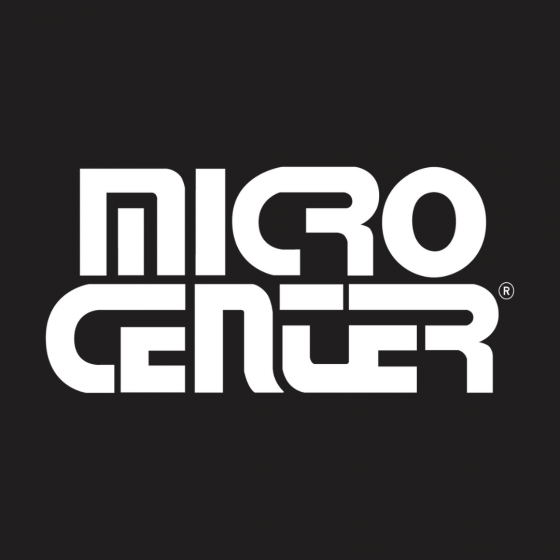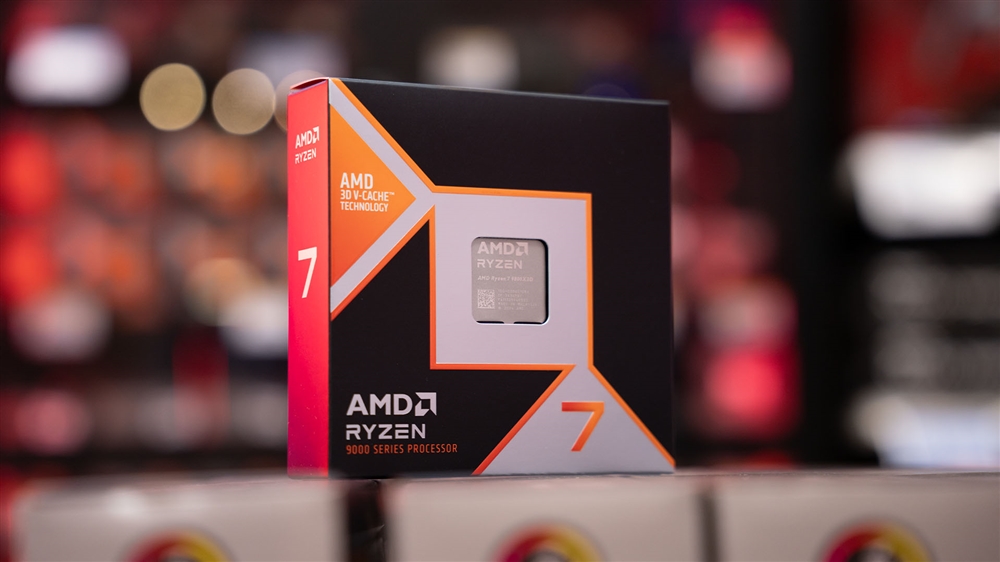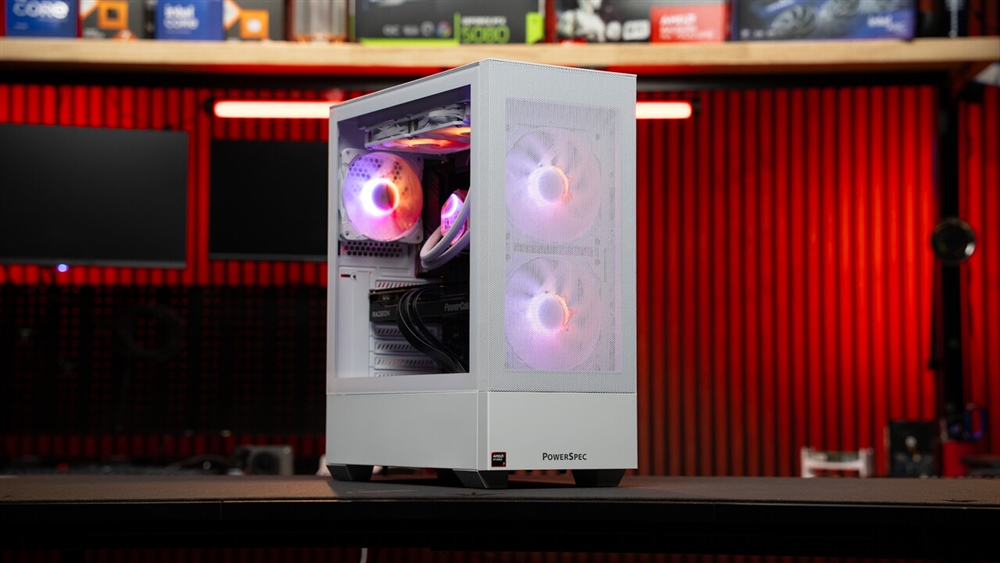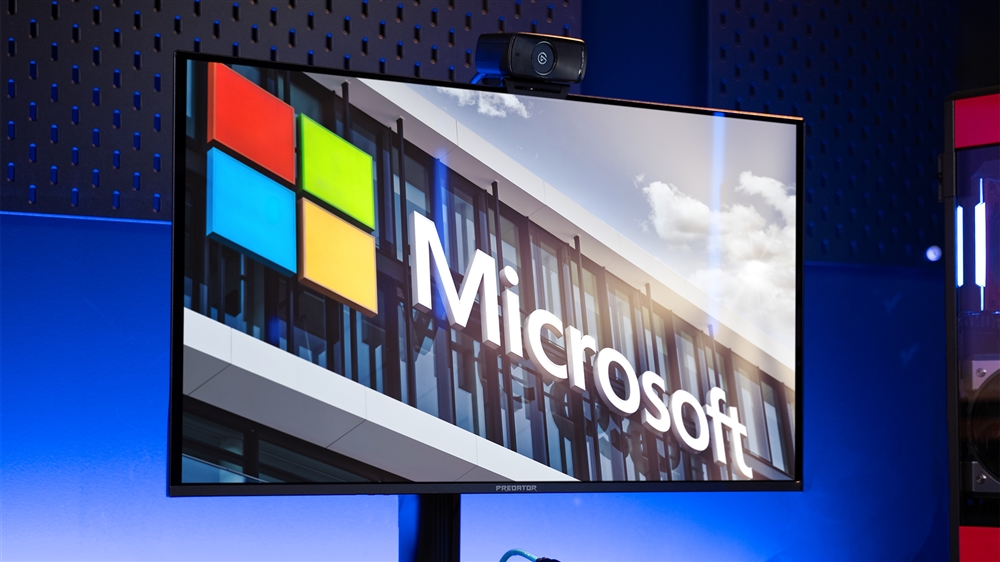How to Choose the Best Computer for Business
Our computers for business buying guide will show you the path to choosing the best productivity computer so you can work like a boss.Buying Guides
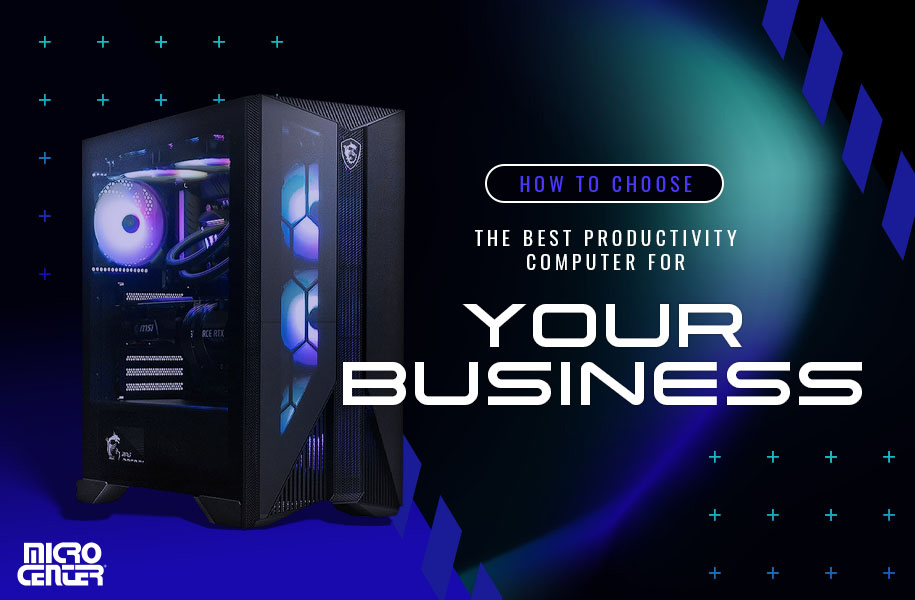
Maybe you use your business computer to design logos or edit videos for your clients. Perhaps it's where you track sales, manage customer relationships, and look for new leads. You might use it for heavy-duty data analysis, or even for training machine learning models. In some cases, it might be all of the above!
So, where should you start if you're a small business owner searching for the best computer for your business? How do you sift through the many options available and find the one that fits your business needs just right? Up ahead, our guide will show you the path to choosing the best productivity computer so you can work like a boss.
Are You a Power User?
To get started with choosing a productivity computer, you'll want to look at the most important tasks and workflows involved in your day-to-day operations. The point is to determine whether you need a computer oriented toward power users — people who use specialized, high-powered software and/or need access to advanced functions and extreme processing power.
Here's why that's important: Any full-featured office computer today can handle business fundamentals like email, basic bookkeeping, and Microsoft 365. If the basics are all you need, you're probably not considered a power user — but that's not a bad thing! For non-power users, a desktop computer or laptop with standard office specs will probably meet your needs. That means you can save some cash on processing power and focus on other considerations like form factor and battery life.
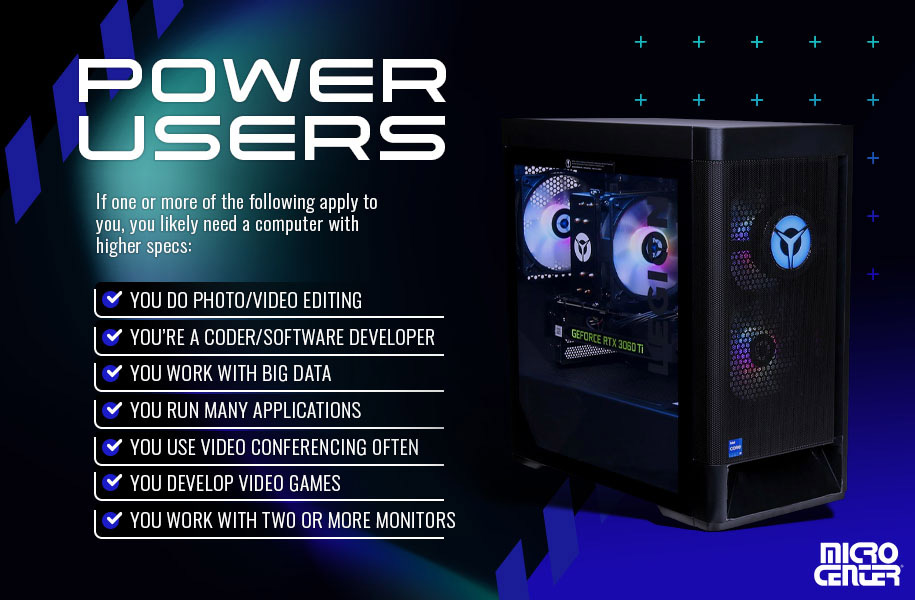
On the other hand, if one or more of the following apply to you, you likely need a laptop or computer with higher specs that's designed for small business power users:
- You do photo/video editing, audio production, CAD, animation, or other creative and design pursuits
- You're a coder/software developer who needs to run processor-heavy tools like compilers and debuggers
- You work with big data for analytics and/or machine learning
- You develop video games or VR/AR software
- You constantly run many different applications at the same time, especially if some of those applications are demanding
- You communicate through video conferencing often and need the highest quality performance and visual fidelity
- You work with two or more monitors at once
For the purposes of this guide, you can often think of the phrase “power user” literally — as in, “How much power am I going to actually use?”
What is a Workstation?
Another phrase power users should look for is “workstation,” which refers to computers with powerful components optimized for professional use. Workstations can be desktops or laptops, and they're must-have tools for many of today's working professionals.
These are some of the key features of any workstation PC:
- Robust Components: Workstation PCs have top-tier components that enable them to run demanding software for tasks like machine learning, big data, graphic design, CAD drawing, audio production, and beyond. Any modern workstation PC will feature a powerful multi-threaded CPU and at least 32GB of high-speed RAM. Models designed for visual software like Adobe Creative Suite or AutoCAD will also include high-powered discrete graphics cards designed specifically for professional uses.
- Constant Usage: Workstation PCs are built to handle heavy computing loads for hours at a time. A workstation's cooling system, which can be either air or liquid-based, creates powerful airflow to keep components cool for hours at a time while using demanding software. In addition, a workstation's components are designed to maximize computing power while minimizing electricity consumption, allowing workstation PCs to work harder for longer without encountering thermal throttling.
- Scalability and Expandability: Workstation PCs also offer the ability to upgrade components easily, so your PC can keep pace as your business grows and your workloads become more demanding. Workstations typically feature the latest CPU socket architecture paired with a motherboard and power supply that can handle CPU upgrades, allowing you to slot in a new CPU when you need more processing power. Finally, workstations also include expandability features such as large numbers of extra drive bays for additional SSDs and support for jumbo-sized RAM kits (often up to 128GB or more).
- Part Sourcing: Many workstation PCs have parts that are easy to source and replace. While these components still typically come at a higher price point due to their power, their manufacturers offer robust supply and support to ensure that power users can access the components they need.
- High-Performance Storage: Most workstations also include professional-grade storage solutions. You'll find at least a 512GB solid-state drive in almost every workstation, and some feature much larger drives of 2TB or more. A workstation SSD is also built for speed, using NVMe technology to connect through your motherboard's PCIe interface, typically with support for the latest and fastest PCIe 4.0 or 5.0 protocols. Nearly all workstations also support Redundant Array of Independent Disks (RAID) storage, which allows you to install multiple drives and store data across them for reliability and redundancy.
- Warranty: Workstation PCs often come with a longer warranty period than standard consumer PCs. Manufacturers know that businesses use workstation PCs at maximum capacity for many years before replacing them, and they offer more robust warranties to ensure that their customers receive the long-term performance they're expecting.
Laptop workstations are also increasing in popularity. These ultra-high-powered laptops pack the power of a workstation into a portable PC, so you can take your most critical work tools with you wherever you go. Although they necessarily lack some desktop features, such as extra drive bays, they maximize the advantages of the laptop form factor through premium features such as large ultra-HD displays.
Consider The Operating System
Next, consider whether you want a PC (running Windows 10 or 11) or a Mac (running macOS). The PC and Mac ecosystems are much more compatible than they used to be, especially when running cloud-based apps, so this decision is less of an existential choice and more about which experience you want. Nonetheless, there are substantial differences, some of which include:
- Customization: Macs aren't designed to have their parts upgraded or otherwise swapped out, although they can be configured with different hardware options at purchase. If you want to be able to upgrade individual computer parts, a PC is the way to go.
- Specialized Software: While it's increasingly common to see major software tools offer both PC and Mac versions, some are still exclusive to one OS or another. Check supported operating systems for any software you know you'll need to use.
- Security: Apple's total control over Mac hardware and software, including the closed-source nature of macOS, makes the Mac environment exceptionally secure. However, tools such as Windows Defender have improved Windows' security to the point that either OS is reasonably secure, so long as you follow basic best practices.
- Ecosystem: Macs are known for their seamless integration with other Apple products like iPhone and iPad. Not everyone wants or needs that, and you can definitely use a Mac without being part of the full Apple ecosystem, but some business owners find the integration convenient.
Windows business users should also be aware of the different tiers of Windows software available. Windows 11 Home is the default option on many PCs, and it can be sufficient for small home-based businesses. However, Windows 11 Pro is designed specifically for business use and includes numerous features that business owners will appreciate, including:
- Hardware Support: If you need enterprise-grade PC hardware, Windows 11 Pro offers more robust support. While the Home edition provides plenty of headroom for the average user, Pro can support multiple CPUs, up to 128 CPU cores, and up to a whopping 2 TB of RAM.
- Virtual Machines: Windows 11 Pro offers Hyper-V, a tool that allows users to run other operating systems as “virtual machines” (VMs) inside their current OS. This tool offers many applications to professional users, from trying out different operating systems to running older software to opening suspicious files without risk to the main system. The Pro edition also allows your system to host Windows Remote Desktop, so you can access it from anywhere.
- Security: In addition to VM support, Windows 11 Pro includes upgraded security features such as BitLocker encryption to protect your data if your PC is lost or stolen. Windows Information Protection (WIP) is another key Pro feature that gives you tools for controlling data access within your organization.
- Enterprise Management: Finally, Windows 11 Pro also includes various features for device management within larger organizations. Highlights include Windows Update for Business, which allows you to manage software updates at an enterprise level, and Group Policy, which lets IT admins set rules for company devices en masse.

Desktop vs. Laptop
The choice between a desktop and a laptop is a big enough topic that we've dedicated a separate guide to it, so we highly recommend looking at our dedicated guide to choosing between a laptop and a desktop for businesses. Here's the short and sweet version:
- Business Desktop: Pound-for-pound, a desktop typically offers more powerful components for your money. It's a great option if your business computer will stay put in your shop, office, or studio, and a desktop offers far more opportunity to customize your computer hardware than any laptop.
- Business Laptop: On the other hand, a laptop might be downright necessary for anyone who works on the go regularly. Even if you don't, the smaller form factor and portability of a laptop can simply be convenient. It also offers the advantage of getting your keyboard, mouse, and monitor all-in-one package.
You also don't necessarily need to pick just one! Some business owners like the combination of a PC workstation desktop as a main business computer with a tablet or 2-in-1 for light mobile computing when you need it.
CPU and GPU Specs
A computer's central processing unit (CPU) handles most of its core operations and number-crunching, while the graphics processing unit (GPU) handles all of the PC's graphical tasks. These are two of the most important specs for power and productivity, so PC users should get familiar with the basics of the processor landscape today:
- CPU: Power users will want to look at the CPU requirements of the programs they use and compare them with the performance specs of a given workstation CPU. High-performance processors like the Intel Xeon and Ryzen Threadripper series are common choices for power users.
- GPU: Unlike gaming PCs, business computers often don't need discrete graphics cards. Many business PCs have an integrated GPU built into the CPU that provides plenty of graphical capacity, even for many power users. However, some work PCs do need powerful graphics cards. If you'll be using graphically-intensive software for tasks like animation and video editing (or machine learning, which requires the processing power of a GPU), look for a model with a professionally-oriented graphics card, like those from the AMD Radeon Pro or NVIDIA Quadro series.
Mac users will have simplified choices in both CPU and GPU, thanks to Apple's M1 and M2 system-on-a-chip processors, which function as combined CPU, GPU, and RAM. Any non-power user will find the M1 or M2 more than sufficient for their needs, but power users should consider models with more powerful chips like the M2 Max and M2 Pro.
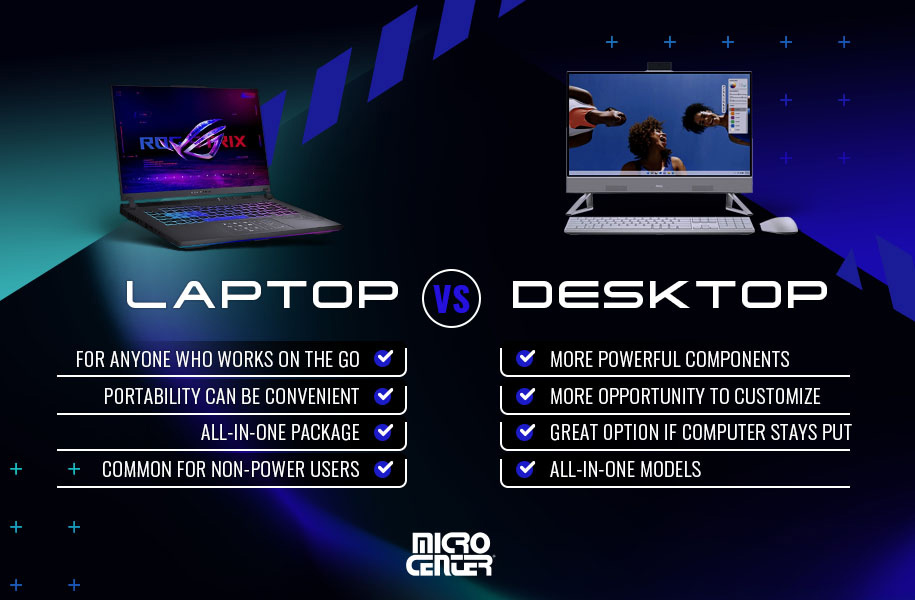
Form Factor
Whether you're leaning toward a desktop or a laptop, form factor is still a major consideration. Here's how it breaks down for both desktops and laptops:
- Desktops
- The traditional tower-based model with separate computer monitor and speakers. This has the largest footprint, but gives you lots of options for positioning and customization. Many compact business desktops are also now available for those who need a slimmer profile.
- The all-in-one model, which combines the monitor and internal components. These are popular for their simplicity and minimal space footprint, but they offer much less customization potential than tower models do.
- Laptops
- Standard notebook laptops, which are designed for a balance of portability and capability. This form factor is the most common choice for non-power users and includes tons of options across the price and performance spectrum.
- Workstation laptops, sometimes called “desktop replacements” because they're designed to give power users maximum capability in a smaller package. These are often larger, heavier laptops, although super-thin “ultrabook” models also offer high performance and excellent portability (at a price premium).
- 2-in-1 convertible laptops, which offer foldaway or detachable keyboards that enable the laptop to be converted into a tablet. 2-in-1s trade power for versatility, meaning they're often a good choice for non-power users who are often working outside of a home or office.
Battery Life
Battery life is a top priority for most buyers when shopping for a business laptop. A longer battery life means more productivity on the go and less need to carry a charger everywhere.
Any business laptop will include a basic rating of its battery life in hours, but it's best to treat this as a ballpark estimate — it can vary a lot in real life. In particular, demanding software like AutoCAD or Adobe Creative Cloud will often drain a laptop's battery much more quickly than its rated lifespan.
Research and reviews are crucial for ensuring your laptop's battery life meets your needs. Many tech review channels on YouTube test battery life extensively, so check out what some of the experts have to say. It's also worth looking at how quickly a laptop charges from empty to full, especially if you'll be using your laptop heavily on the road.

Display Size and Specs
The display on your business computer is important for any user's productivity and quality of life. However, it can be a make-or-break factor for power users who do graphic design, video editing, and other visual arts. These are the most crucial aspects:
- Size and Aspect Ratio: Most users find they can work more efficiently on a larger-sized display, whether that's in a spreadsheet or a Photoshop project. Business laptops typically feature displays of at least 15 inches, and many go up to a jumbo-sized 17 inches. It's also worth looking at the aspect ratio. Many modern business laptops and monitors feature roomier 16:10 or 3:2 aspect ratios, which provide more space on your screen.
- Resolution: A standard 1080p display is fine for most business computers. Again, the exception is visual pros like photo editors and graphic designers, who should go with a 1440p or even 4K display if available.
- Color Accuracy: Some displays are calibrated for hyper-accurate color that closely matches color standards. These are crucial for graphic designers and photo/video editors, but optional for most other users.
- Multi-Display Support: If you like to use more than one display to maximize productivity in your office setup, make sure your business computer supports the number you want. Almost every business computer supports two, many support up to three, and a handful support up to four.
More Factors to Consider
- RAM: This is a computer's “working memory” that powers nearly every operation. Non-power users will typically be fine with 8GB RAM for basic tasks, although 16GB is quickly becoming the gold standard for mid-range and high-performance computers. For power users, 16GB is a must-have, and 32GB is the new standard for heavy-duty tasks like machine learning and video rendering.
- Storage: Most business users store their bulk files in the cloud and on physical media backups, keeping a relatively small amount of files stored locally. Nonetheless, you'll want a solid state drive (SSD) on your business computer with at least 256GB of storage, and power users who work with very large files may want as much as 1TB or more of local storage.
- Ports: Look at which built-in ports a computer offers. Most users will require USB-C and USB-A, although USB-A is being phased out on some newer models. If you plan to connect your computer to an external monitor, or you give presentations often, be sure to look at whether it offers HDMI, Thunderbolt, and/or DisplayPort, and check the general number of ports if you know you'll need to connect a lot of peripherals to your computer.
- ISV Certifications: Many computer manufacturers work with independent software vendors (ISVs) to verify their products' performance and compatibility with popular software. For power users who know they'll be using specific software, seeking out a model with ISV certifications for that software is a smart choice.
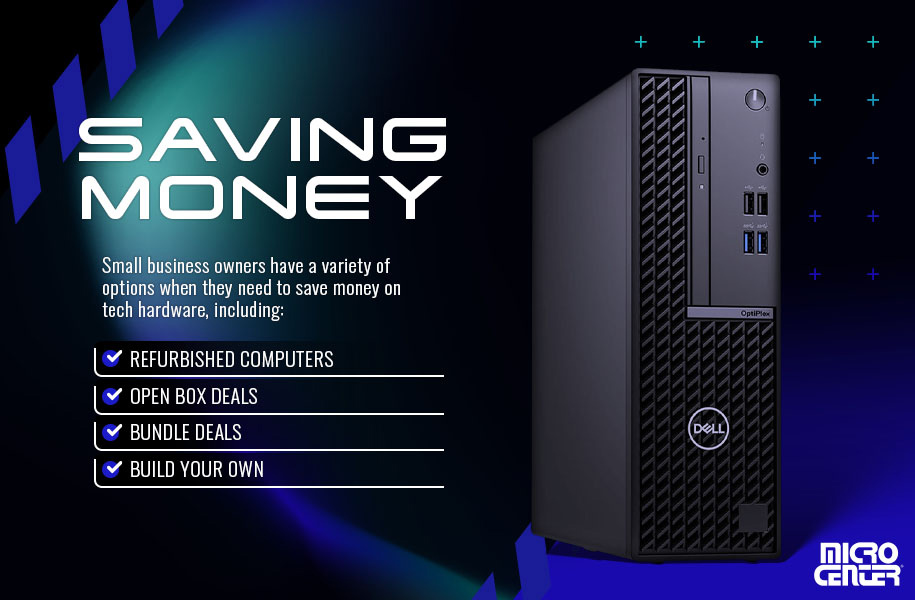
Saving Money on Your Business Computer
Running a small business means stretching your capital further, and small business owners have a variety of options when they need to save money on tech hardware, including:
- Refurbished Computers: Buying refurbished is one way that many small business owners save money on a productivity computer. Micro Center's refurbished computers go through a rigorous rebuild and inspection process, ensuring that they're in perfect working order and ready to serve your business.
- Open Box Deals: An open box deal is a discounted rate on a computer that's been previously purchased, opened, and returned, but is verified to still be in like-new condition.
- Bundle Deals: The cost of monitors, keyboards, and other peripherals can really add up, which is why many SMB owners seek out bundle deals. These offers bundle a computer with essential peripherals and save you money on the full package.
- Building Your Own: Building a custom PC is a cost-effective way to get a powerful desktop computer with the components you want. Doing it yourself is surprisingly easy (especially with help from our PC builder tool), but our experts will also be happy to assist with custom PC building services!
Finally, don't forget that you may be able to write off the purchase of a business computer on your income taxes.
Micro Center is your one-stop source for small business technology. Shop our entire lineup of workstation laptops and desktops here — or check out all of our small business solutions, including server gear and more.
Comment on This Post
See More Blog Categories
Recent Posts
From Dorm Room to Office Desk: How to Prep Your College PC for the Professional World
With a few upgrades and a little cleanup, your beat-up college PC will be ready for your first job, freelance gigs, and endless Zoom meetings.
Continue Reading About From Dorm Room to Office Desk: How to Prep Your College PC for the Professional WorldThis Week in AI: Microsoft's Says AI Can Diagnose Patients Better Than Doctors
For July 4, 2025: Cloudflare blocking chatbots, ChatGPT referrals to news sites tick up, AI laws remain for states to decide.
Continue Reading About This Week in AI: Microsoft's Says AI Can Diagnose Patients Better Than Doctors

